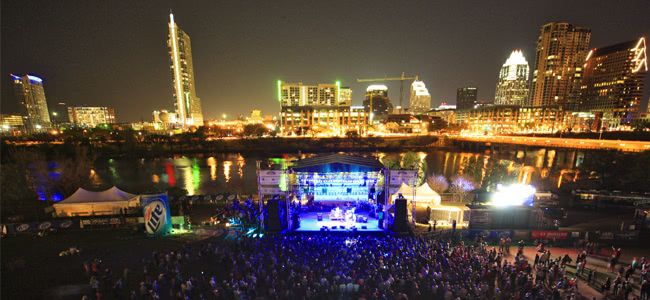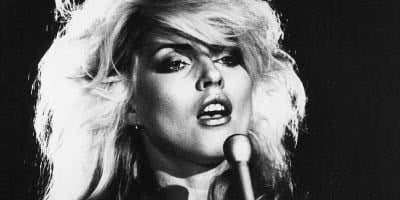As we pass the halfway point of 2012, the state of live music in Australia is still in a state of flux. Sure Matt Corby and the Rubens are selling out multiple shows at The Forum, and sure everybody’s over the moon about Coolio playing at Falls festival. But across the east coast of the country, iconic music venues are being put up for public sale. The three major sites being the Tivoli in Brisbane, Sydney’s The Basement, and Melbourne’s The Palace; which all went up for public sale on the market in the last month.
This news comes during a particularly grim climate that has seen a swathe of music venues close in the last 12 months.
In Sydney we’ve seen the closure of The Abercrombie Hotel’s doors after a suspicious fire, the passing of The Gaelic, as well as Tone Bar shutting down last August.
Nation-wide, things aren’t looking much better. In Melbourne we’ve seen the recent closure of Phoenix Public House (after only six months) and the East Brunswick Club following its Laneway Festival sideshows; as well as both The Arthouse and The Public Bar in the last year. Coupled with these are the closures of Canberra’s The Greenroom and Brisbane losing The Troubadour.
Festivals too haven’t been left untouched. Aside from the cancellation of Perth’s On The Bright Side, the last twelve months has seen Victoria’s Castle Music Festival fall-over and NSW’s Central Coast Coaster Festival coming apart.
Also hitting the scrapheap was Supafest‘s super failure, Good Vibrations calling it a day for another year, and who could forget the disastrous Soundwave Revolution which fell over in a spectacular fashion just weeks out from the event. Even Big Day Out faced a substantial downsizing amidst one of its co-founders leaving.
However, the Australian festival market is still very much alive. Splendour in the Grass sold out in a day, selling out in a record-breaking 43 minutes, and November’s Harvest festival is likely to follow suit. Along with the first round announcement of Falls Festival and Southbound, Parklife 2012; and with Big Day Out’s first additions to the bill due in a matter of weeks – festival season fever is well under way.
It seems that while some live music events have suffered as a result of the over-abundance of quality festivals which dot the calendar; all-in-all, it’s still the most fertile part of the Australian music landscape. Still, it can’t be ignored that the main attraction of these festivals are the huge international acts which adorn the line ups.
Which begs the question, is this the best thing for Australian music?
If the majority of punters are spending their money to head off to catch Bloc Party and At The Drive-In exclusively at Splendour, or catching Beck at Harvest or attending Falls for Coolio; what does this mean for live music venues in Australian cities?
With so much focus on Australia’s huge festival scene, while live music venues fall by the wayside; perhaps an amalgamation of the two would provide a means to ensure the ongoing survival of both.
Most of the music festivals in Australia, draw punters outside their cities – to vast paddocks, to the seaside – to watch between twenty and eighty bands across two, three or four stages for a number of days. But imagine a festival boasting thousands of bands across a whole city’s worth of stages, for over a week!
Look no further than Austin, Texas’ South By South-West (SXSW). Located in America’s deep south, 2000 bands, ranging from locals to the world’s largest acts, overrun the Texas college town with gigs running in bars, churches, street corners, roof-tops… anywhere a decent PA and a bar can be put. In the last half-decade, SXSW has grown into one of the world’s largest music festivals, as well as must-attend event for fans and industry professionals alike.
It’s a festival structure which caught the eye of Eddie McGuire (yikes). The occasional-businessman, more-often-presenter’s own radio station, Triple M, first broke the news that McGuire was so impressed by Cherry Bar owner James Young’s descriptions of the city-wide music event’ that he’d presented his own idea to the Victorian Major Events company to see if he could start up a similar event in Melbourne.
Meanwhile, Victorian Premier Ted Bailleu, beat Eddie to the punch – announcing his own plans for a city-wide festival in ‘White Night’. An event which will temporarily turn Melbourne into a 24 hour city on Feburary 23rd next year. According to The Age, ”the city’s galleries, theatres, music venues, laneways and major cultural institutions will come alive with a range of special events and programs – from the grand to the intimate.”
Though the event is structured around the city’s Arts Centre and includes arts, culture, food, film sport and design; live music will also play a strong part in the one-day festival (mind you, we’re a little nervous about any mergers between politicians and music after Craig Emerson’s antics).
The one-day event could prove to be an excellent dry-run for similar events on a larger scale, which will help prove that Melbourne has the infrastructure for an event like SXSW. It may not have as many live music venues (particularly now), but Melbourne certainly has a diverse and fervently devoted enough live music audience to support such a venture.
It could be a perfect pairing between Melbournian’s love of music festivals and live music in the city; and who knows? If Melbourne proves a fertile city for a SXSW-type festival, there’s every chance that Sydney – with a similar infrastructure – will likely want to put on a similar event. If for no other reason than to try and out-do Melbourne…
In fact, Australia already has the blueprint for its own SXSW. Brisbane’s BIGSOUND music event combines a 120-strong band line up along with keynote addresses from national and international music figureheads across three days in September. In a few short years, it has already established itself as the go-to spot for emerging bands and music industry figureheads.
More events like BIGSOUND or SXSW; festivals which promote the vibrancy of live music in Australia as well as site for industry movement, could be the perfect way to help promote the stability of live music venues; relying on established locations and scenes rather than the permission or establishment of music festival style sites.
There’s no reason the two should remain mutually exclusive, the influx of festival goers to the slew of live venues throughout Australian cities could do nothing but help their longevity. Nor would it detract from other music festivals, providing a different live music experience and simply adding more diversity to the already bursting festival calendar.
If Melbourne’s S.L.A.M rally is anything to go by; Australian’s love seeing live music in city venues, and they especially love music festivals. Bringing the two together seems like a no-brainer.
Thankfully, it’s not all doom-and-gloom for live music venues. There is light at the end of the tunnel, with new venues and live music events springing up. Adelaide’s new ‘Spin Off’ Festival is giving South Australian punters a taste of Splendour In The Grass, while Perth’s ‘Rock-It’ Festival is returning after a three year hiatus, bucking the trend of Western Australian festivals being on the downslope.
Meanwhile, the Annandale Hotel’s innovative ‘Buy A Brick’ scheme is insuring its survival, while the owners of the iconic Melbourne venue, The Arthouse, have just announced their plans to open a new venue, The Reverence Hotel, in the Footscray with not one, but two band rooms.
As the year rolls on, we can only hope to hear more stories of venues opening than closing, festivals continuing to build on their strengths and, if the right people see the benefits, maybe even a mix of the two…
Down By Down Under 2013, anyone?




































